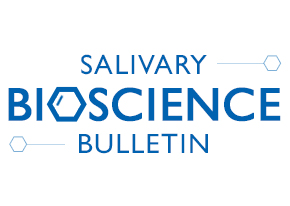The Utility of Salivary Cotinine as a Biomarker for Adolescent Smoke Exposure
Examining the Validity of Self-reported Primary and Secondary Exposure to Cigarette Smoke in Adolescent Girls: The Utility of Salivary Cotinine as a Biomarker. Author: Beal SJ, et al. (2018), Subst Use Misuse. BACKGROUND: Studies of cigarette use and exposure often rely on either self-report or cotinine assay. In adolescence it is not clear how well assays […]
Research highlights multi-system perspective for motivation, adolescent depressive symptoms, and HPA axis activation
An exploratory analysis of the joint contribution of HPA axis activation and motivation to early adolescent depressive symptoms. Author: Rudolph KD, et al (2018), Developmental Psychobiology BACKGROUND: This study examines the interactive contribution of the hypothalamic-pituitary-adrenal (HPA) axis and approach-avoidance motivation systems to longitudinal changes in depressive symptoms across the adolescent transition. In the summer […]
Social Context of Psychosocial Processes During Adolescent Development and the Psychobiology of the Stress Response.
Peer Networks, Psychobiology of Stress Response, and Adolescent Development Author: Kornienko, O, et al (2018), PLoS BACKGROUND: A consistent focus of research has been on understanding how social relationships shape the activity of the biological stress response system. Progress has been made in characterizing these dynamics at the level of the individual, but significantly less […]
5-HTTLPR variation may influence the impact of early adversity on HPA-axis regulation
Individual Differences in Early Adolescents’ Latent Trait Cortisol: Interaction of Early Adversity and 5-HTTLPR. Author: Chen FR, et al. (2017), Biol Psychol. The present study aimed to examine the interaction of 5-HTTLPR and early adversity on trait-like levels of cortisol. A community sample of 117 early adolescent girls (M age=12.39years) provided DNA samples for 5-HTTLPR […]
The role of testosterone and age in impatient decision-making in boys
Dissociable effects of age and testosterone on adolescent impatience Author: Laube C, et al. (2017), Psychoneuroendocrinology The onset of adolescence is associated with an increase in transgressive behaviours-from juvenile delinquency to substance use and unprotected sex-that are often attributed to increased impulsiveness. In the past, this increase was ascribed to “raging hormones”; more recently, to […]
SBB – Measuring Multiple Analytes
Drop Date: May 2017
In This Drop: Keeping the Science in Saliva When Measuring Multiple Analytes
Key Terms: Acute stress, Adolescence
Salivary cortisol and the effects of child care on development in high & low risk contexts
Child Care and Cortisol Across Infancy and Toddlerhood: Poverty, Peers, and Developmental Timing Author: Berry, et al (2016), Family Relations Evidence suggests that relations between child care and children’s development—behaviorally and physiologically—likely differ between children from high- versus low-risk contexts. Using 1,155 participant data from the Family Life Project, the authors tested (a) whether within- […]
Review: How negative parent-child relationships affect the biological stress system
Family relations, stress, and vulnerability: Biobehavioral implications for prevention and practice Author: Ha, et al (2016), Family Relations Developmental psychobiology research supports the hypothesis that individual differences in biological stress systems that are sensitive to environmental experiences are associated with individual adjustment problems. Negative social experiences, especially in family contexts, contribute to the dysregulation of […]
Early adversity contributes to lower latent trait salivary cortisol (LTC) levels in adolescence
Individual differences in early adolescents’ latent trait cortisol (LTC): Relation to early adversity Author: Stroud CB, et al (2016), Developmental Psychobiology Substantial evidence suggests that youth who experience early adversity exhibit alterations in hypothalamic pituitary adrenal (HPA) axis functioning, thereby increasing risk for negative health outcomes. However, few studies have explored whether early adversity alters […]
 Contact: Salimetrics (USA)
Contact: Salimetrics (USA)

